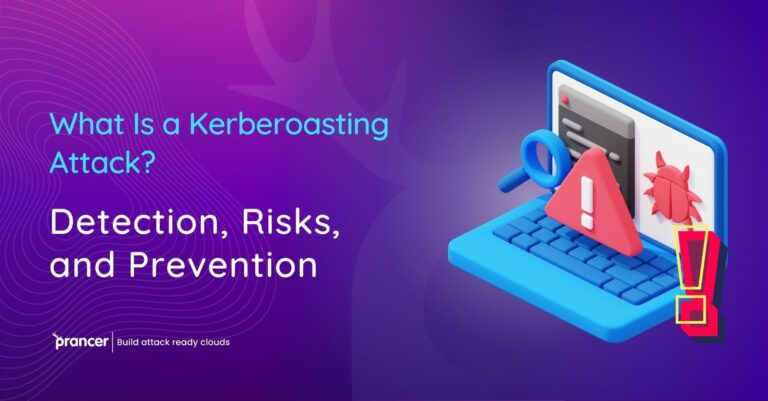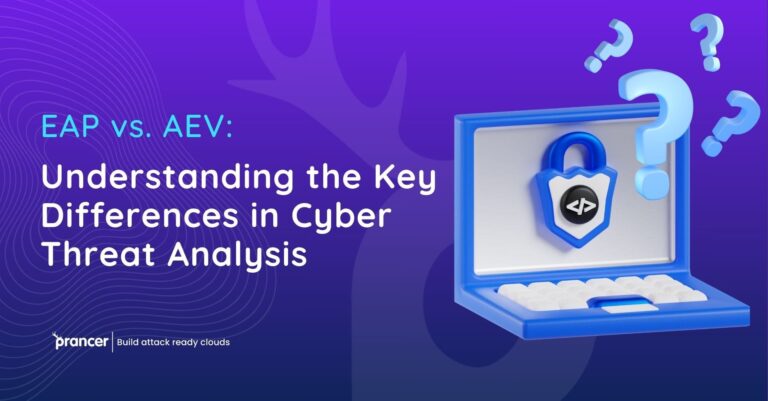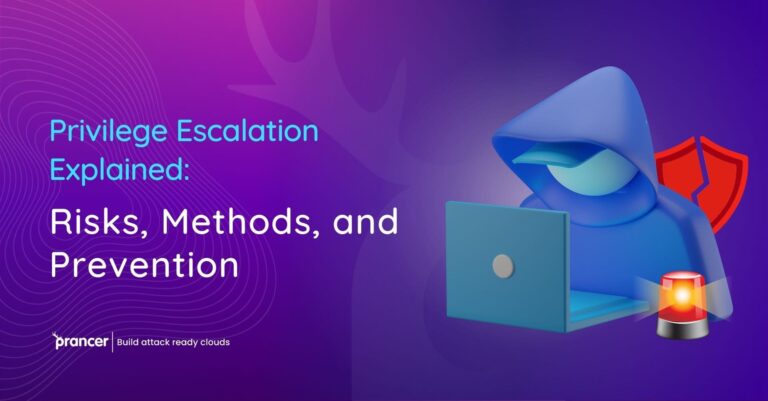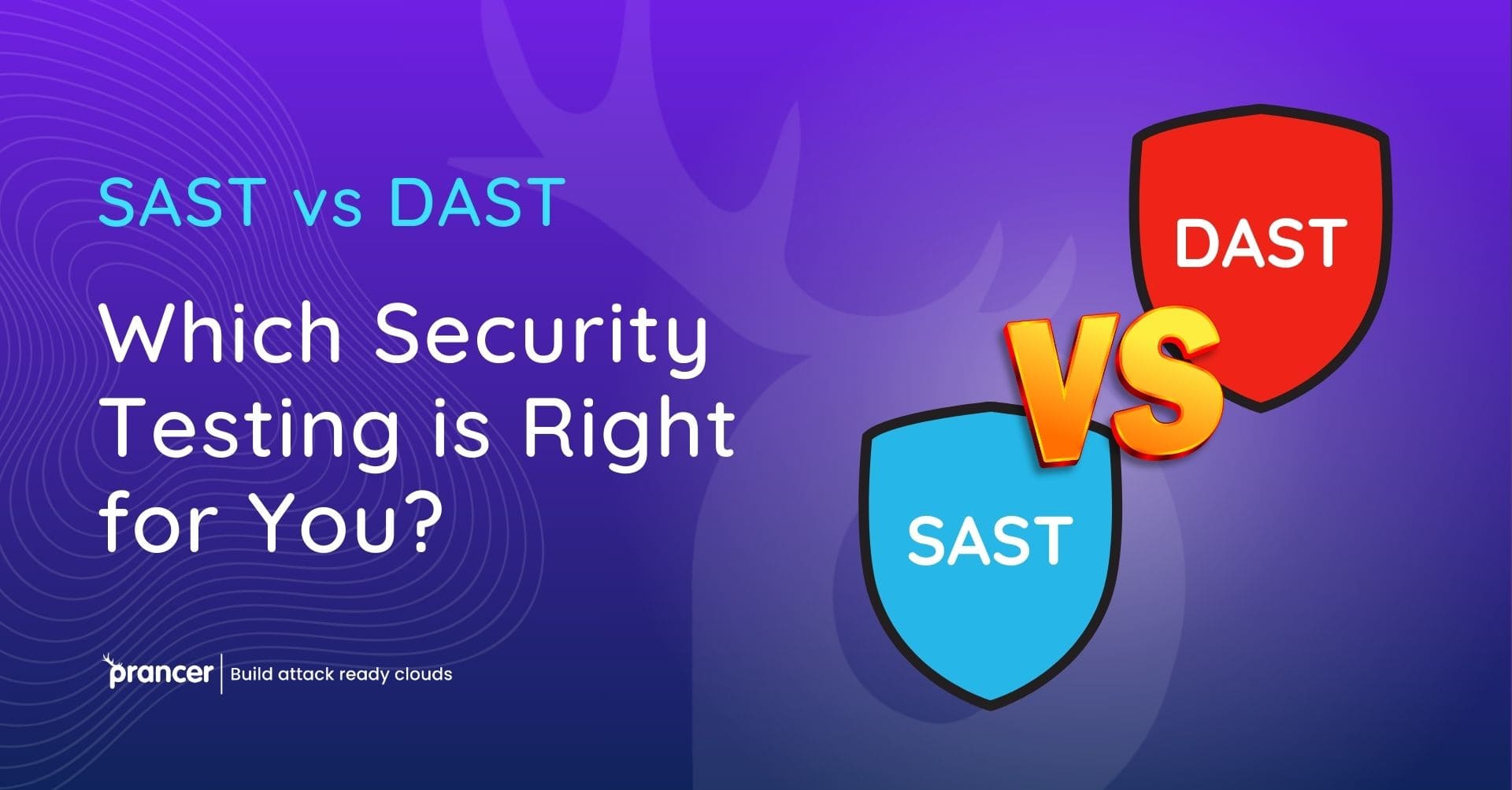The anti-phishing data show that in the context of constantly changing threats, organizations need to be ready for the protection of their systems and information. Two fundamental blocks of a proper security plan are Static Application Security Testing (SAST) and Dynamic Application Security Testing (DAST). But what exactly are these methods, and how are they distinguished from one another? More significantly though, how can they be optimally used and that, in combination with automated penetration testing? In this special guide, we will discuss SAST vs DAST and learn more about how Prancer, a top cloud security solution, utilizes SAST and DAST in its security solutions.
Introduction to Application Security
But nowadays, application security is a mandatory element most business plans and strategies cannot exist without. As seen today, threats are more advanced than before, and as such, there is a need to enhance good security measures. SAST and DAST are two popular testing methodologies that can be used to find weaknesses in applications. But how do they work, and which one is the right for your organization? This article will also analyze the SAST and DAST to define their position in the security context.
What is SAST?
Static Analysis is a secure software development life cycle used to identify security flaws in an application without running the code, or it involves analyzing source code, byte code, or even binary code. Try to imagine it as a general check-up of your application’s internal organization and, perhaps, some prevention of potential issues. SAST tools scan the source code in the early stages of the SDLC and look for vulnerabilities before an application is live.
What is DAST?
Dynamic Application Security Testing (DAST) on the other hand is the testing that is carried out on the defined runtime environment of the application. While SAST analyzes the code in its source state, DAST works in a runtime manner, mimicing the attacks to find out the issues.
How DAST Works
DAST tools work on the assumption that they are outside the application – like a hacker – and therefore, find vulnerabilities that are not evident from the code. This method is useful for revealing problems connected with the application’s functioning, including improper configurations, authentication problems, and other runtime weaknesses.
SAST vs DAST: Main Distinctions
In the case of SAST vs DAST, it must be mentioned that both are very different from each other and are used at different stages of the process. SAST is preventive, it finds the vulnerabilities before the development of the application, while DAST is detective, it finds them when the application is fully developed and is active.
Key Differences
- Timing: SAST is carried out during the initial stages of software development, and it is in contrast with DAST, which is done after deployment.
- Scope: SAST is concerned with the actual source code, whereas DAST looks into how the application works while it is running.
- Vulnerability Detection: SAST is good at identifying specific code flaws while DAST is good at identifying run time flaws.
The two approaches are very important, but the impact of each depends on the method used in application and the times when it is exercised. Knowledge of what these two have strengths and weaknesses will assist organizations such as Prancer in coming up with a stronger security strategy.
The Use of Automated Penetration Testing
Automated penetration testing should be considered an integral part of the security strategy. While SAST and DAST are designed to look for flaws, and inform a team of such weaknesses, automated penetration testing imitates real-life attack scenarios to know how an application will perform against real threats.
Security testing in Prancer
This is why at the Prancer we are aware that security is never a ‘blanket’ solution. That is why SAST, DAST and automated penetration testing are embedded in our security measures. This is the reason we offer a two-tier defense strategy that considers both the internal and external threats that an application has.
Elevate your cybersecurity with Prancer! Sign up now and start your free trial today!
How Prancer Integrates SAST and DAST
The integration of SAST and DAST has several advantages for the organizations who want to improve the security of systems and applications. Such an approach gives a rather holistic picture of an application’s weaknesses at the code level and at runtime.
Advantages of combining SAST and DAST
The integration of SAST and DAST has several advantages for the organizations who want to improve the security of systems and applications. Such an approach gives a rather holistic picture of an application’s weaknesses at the code level and at runtime.
Key Benefits
- Early Detection: SAST helps prevent vulnerabilities from getting deeper through enabling their early identification, and this will cost and time effective when fixing these vulnerabilities.
- Comprehensive Coverage: Where SAST helps in identifying the vulnerabilities that are present at the time of development, DAST comes into the picture and provides the full picture by identifying the vulnerabilities that exist when the system is in running state.
- Continuous Monitoring: This way, both methods are integrated to provide security throughout the lifecycle of an application, and for the best results, there is a need to ensure that the two methods complement each other.
Common Challenges in Security Testing
Despite the effectiveness of SAST and DAST, there are some hurdles that are experienced. It is therefore important to understand these challenges to improve the usage of these tools.
Challenges with SAST
- False Positives: At times the SAST generates false positives which result in unnecessary remediations.
- Complexity: When SAST is introduced in the large development environment, configuration of the tools can be a daunting task.
Challenges with DAST
- Coverage Gaps: DAST may fail to detect certain vulnerabilities not manifested when the application is in use or those only exploited under certain circumstances.
- Time-Consuming: The DAST tests can be time intensive particularly where large applications are involved, thus may slow down the deployment.
How Prancer Addresses These Challenges
Hence, there is evidence that Prancer is well-prepared to address the issues that are related to SAST and DAST. Our team of experts always engage the clients to increase efficiency of the security testing tools and come up with ways of avoiding a high number of false positives.
Prancer’s Solutions
- Custom Configuration: SAST and DAST tools must be fine-tuned to a client’s needs to minimize new alerts and enhance accuracy.
- Comprehensive Testing: The layered approach of SAST, DAST and automated Penetration testing offers comprehensive coverage with none of the flaws overlooked by the Prancer tool.
The Future Trends in Application Security
It is therefore important that, as new and more sophisticated threats materialize on the cyberspace horizon, so do the techniques and technologies used to counter them. The future of application security will most probably be marked by an increased use of automated solutions incorporating AI and machine learning technologies.
Emerging Technologies
- AI-Powered Security: The ability to predict and identify a vulnerable area before the opponent gets the chance to exploit it using Artificially Intelligence.
- Advanced Automation: The automatic generation of security tests and the ability to automatic remediation of disclosed threats.
- Integrated DevSecOps: The integration of development, security and operations to develop ‘security in’ a software application from development through to operations.
Why Prancer for Security Solutions?
These are some of the new trends at Prancer, and we are always in the process of modifying our security measures. The implementation of the best technologies that are current in the market guarantees our clients are shielded against the existing and the emerging risks.
Prancer’s Commitment to Excellence
At Prancer, we do not agree with the notion of making security an add-on on the products that we design and develop. With the help of SAST, DAST and automated penetration testing we offer our clients complete security assurance for their applications right from the start.
Conclusion: Strengthening Security Posture
As for the SAST vs DAST debate, it is necessary to understand that both approaches are critical for the security of an organization. Combined with the automated penetration testing, the above methods make the security position of businesses more comprehensive. Prancer is dedicated to assisting enterprises in facing this security landscape, providing services that may address the short-term and long-term challenges.




